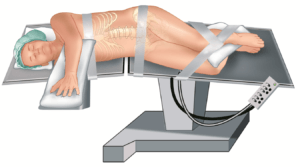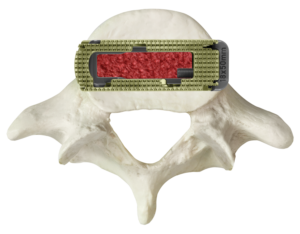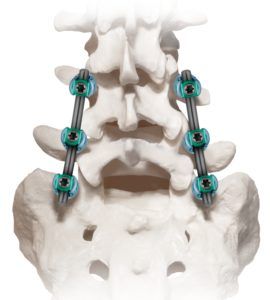Lateral Lumbar Interbody Fusion

What is lateral lumbar interbody fusion (LLIF)?
The primary goal of a lateral lumbar interbody fusion is to relieve pressure on the nerve roots and/or spinal cord and/or treat an unhealthy intervertebral disc in the spine. Lateral lumbar interbody fusion is a method of spine surgery in which the lumbar spine is approached through the patient’s side.
How is an LLIF performed?
A small incision is made in the side. The soft tissues along the side are gently separated to allow access to the surgical site. Surgical instruments are used to remove the disc and decompress the nerve structures.

To fill the vacant disc space and join the vertebrae together, an interbody fusion implant is used. If a combination of a spacer and a plate are used, the spacer is placed into the disc space with the plate placed over the front of the spacer and screws are inserted through the plate into the upper and lower vertebrae.

Screws and rods are used to hold the vertebrae in place while fusion occurs. The screws are inserted into the left and right sides of the vertebrae to be fused. A rod connects the screws to stabilize the spine on each side. Caps secure each rod to the screws. Bone graft may be added along the side of the vertebrae to help with fusion.

Once the surgery is complete, the surgeon closes the incision and moves the patient into recovery.
Disclaimer:
The material on this website is intended to be an educational resource only and is not meant to be a warranty or to replace a conversation between a patient and their physician or member of their health care team. Please consult a physician for a complete list of indications, contraindications, precautions, warnings, clinical results and other important medical information that pertains to this procedure. The decision to receive medical treatment is individualized to the patient and the patient’s symptoms. The information presented on this site may not apply to your condition, treatment or its outcome, as surgical techniques vary and complications can occur. It is important to discuss the viability of any surgical procedure with a physician to decide the right treatment option.
